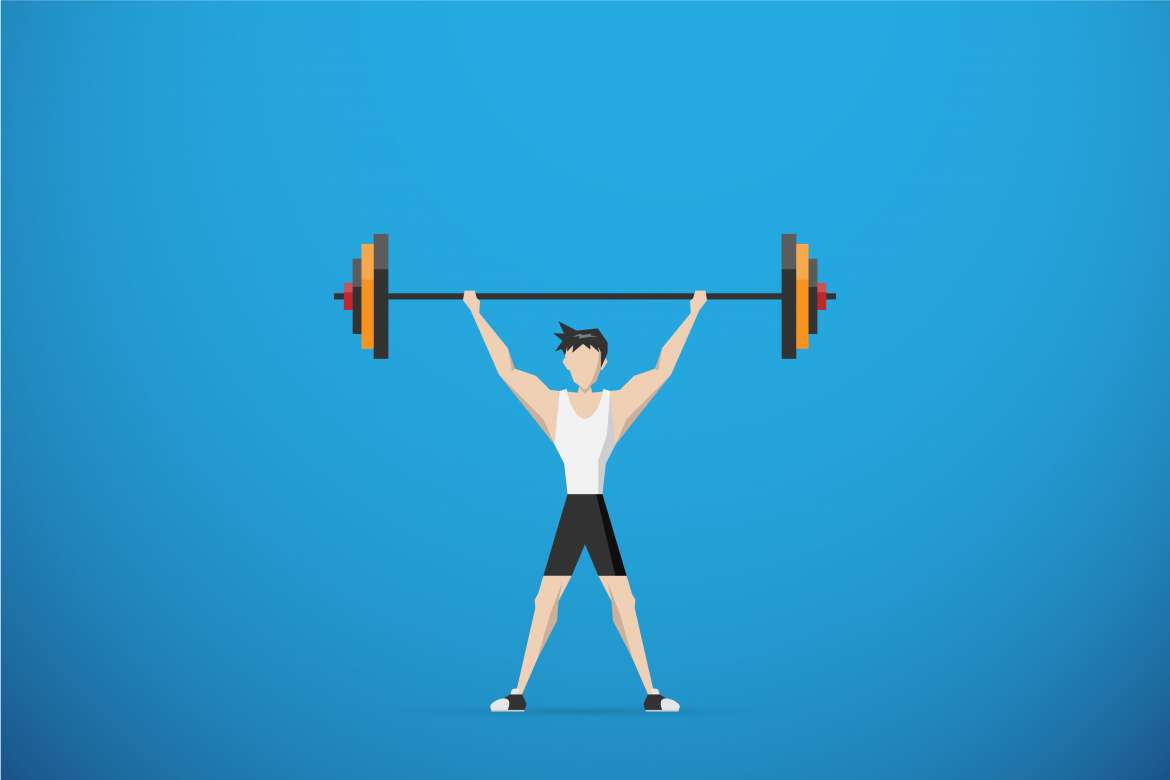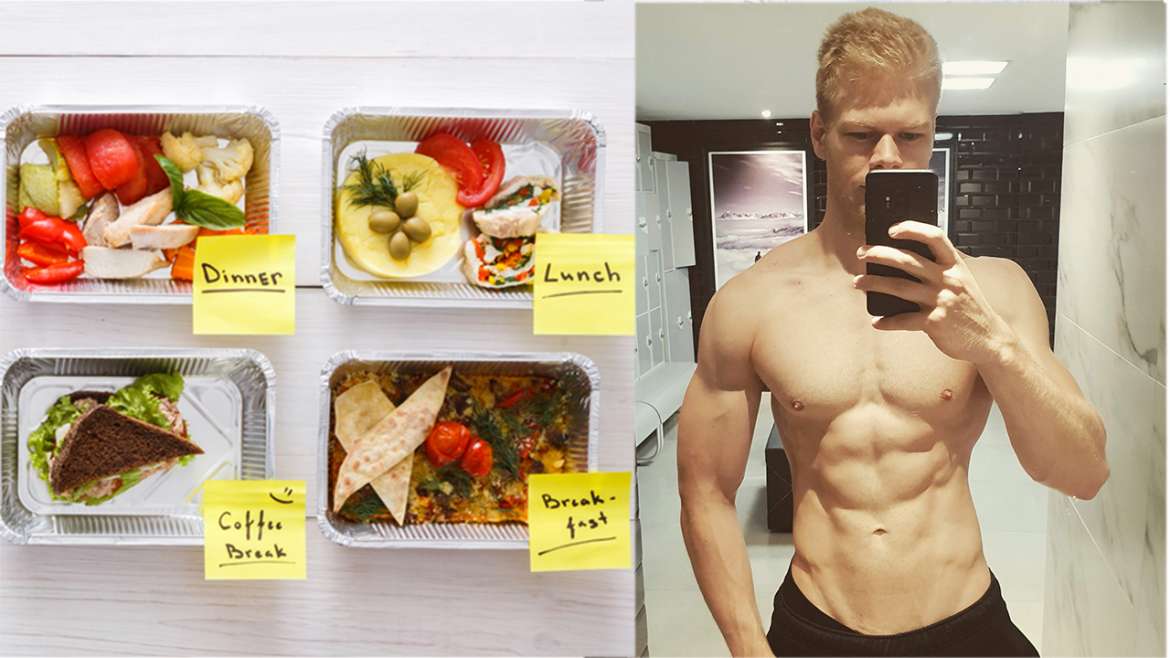If you have just signed up for a gym membership but never actually trained in one you might be a little nervous about your first day there. You are probably wondering what all these machines and exercises are actually for and whether you really need them.
And then there is all the gym lingo that you might not be familiar with, like reps, sets, pull ups, pull downs or side bends…
I admit, it can get a bit confusing in the beginning, but the good news is that you will quickly get the hang of it and if you read this post till the end you will know exactly what to train on your first day at the gym.
We will talk about what the best workout for beginners should look like and what the best exercises are. I will also explain the most important terms and give you a workout plan that you can follow right away.
Make Sure To Set Clear Goals
The first important step in figuring out how to train on your first day at the gym is to set clear goals. With so many workout plans out there you have to have a clear goal in mind to choose the right one.
For the purpose of this post, I will assume that your primary goal is to build muscle and maybe lose fat. Basically, you want to look and feel better. That’s what most people are interested in and what brought me to gym on my first day there. I will not talk about cardio and also not about your diet, because they are explained in other posts and would make this one too long.
Assuming you want to build muscle and maybe get rid of some extra fat you will need a workout plan that helps you achieve these goals and one that is made especially for beginners.
This is important because you will find thousands of workout programs online and most are pretty horrible to be honest. For example, if you ever bought a bodybuilding magazine the sample workouts they sell are usually made for actual bodybuilders and include way too much volume and way too many isolation exercises (I will explain these terms in a minute, don’t worry). Such workouts sometimes last for hours and would wear out any beginner in a few days.
Instead, as a beginner what you want is a full body workout that is built around the most effective exercises and around 60 to 90 minutes long. Before I go over what this workout should look like I need to explain a few terms just so you know what I’m talking about:
First, there are two basic types of exercises: compound and isolation exercises.
Compound exercises utilize multiple joints whereas isolation exercises use only one. For example, the bench press is a compound movement because it uses your should and elbow joints, whereas the bicep curl is an isolation movement because you only flex at the elbow.
Your beginner workout should be built around compound exercises because they target several muscle groups at once, giving you the best muscle activation measured by the time you spend working out. This makes them perfect for building strength and gaining muscle fast.
Next, you should know what the terms “reps”, “sets” and “volume” mean. Doing one rep or repetition means doing an exercise once. Doing six reps of the bench press means going through the motion six times, so lowering the weight and then pushing it back up six times.
A set is the series of reps you do without rest. So if you do 6 reps at the bench press and then stop, you did one set of 6 reps. When you get a workout plan you will often see the sets and reps listed as [Sets]x[Reps]. So “4×6” is the same as saying “4 sets of 6 reps.”
Lastly, “volume” refers to the total amount of training volume done. It can be measured in different ways, but the most common one is the [total number of reps] x [total number sets] x [weight].
Your Workout – What To Train On Your First Day At The Gym
The biggest mistake beginners make is that they focus too much on isolation exercises and not enough on compound exercises.
They think the only way to get bigger arms or a fuller chest is by hitting the muscle directly so they do a million bicep curls in a row. The problem with this mindset is simple. Muscles grow only when they need to, which happens when they are put under a lot of stress. When you go to the gym, you are trying to force your muscles to grow by overloading them.
This strategy works better the more total weight you lift and the more muscle groups you recruit during your workout. Isolation movements allow you to lift only a small portion of the weight that you can move when doing heavily loaded compound exercises.
That’s why your workout will build around the 4 most important compound lifts: the squat, the bench press, the deadlift and the overhead press. They are great because all four can be considered not only compound exercises but also full-body exercises.
Their underlying movements mirror everyday motions like picking up something heavy (deadlift and squats), pushing it away (bench press) or lifting it above your head (overhead press). These movements build bigger arms and legs while strengthening your core at the same time. This means your abs and lower back get a great workout, too.
Awesome, now you only need a workout plan that intelligently combines these lifts. Here is a good example that I usually recommend to beginners:
Full Body Workout 1:
Squats: 3 to 4 Sets of 8 – 10 Reps
Bench Press: 3 to 4 Sets of 8 – 10 Reps
Bent Over Barbell Row: 3 to 4 Sets of 8 – 10 Reps
Full Body Workout 2:
Deadlift: 3 to 4 Sets of 8 – 10 Reps
Pull-Ups or Lat-Pulldown: 3 to 4 Sets of 8 – 10 Reps
Overhead Press: 3 to 4 Sets of 8 – 10 Reps
As you can see, the workout plan consists of two full body workouts and includes all the four lifts along with the barbell row and the lat pulldown machine. At this point you are probably wondering when exactly you should do workout 1 and workout 2.
This is pretty simple. Let’s assume your first day at the gym is a Monday. The workout schedule would look something like this:
Schedule Week 1:
Monday – Full Body Workout 1
Tuesday – Rest
Wednesday – Full Body Workout 2
Thursday – Rest
Friday – Full Body Workout 1
Saturday – Rest
Sunday –Rest
Schedule Week 2:
Monday – Full Body Workout 2
Tuesday – Rest
Wednesday – Full Body Workout 1
Thursday – Rest
Friday – Full Body Workout 2
Saturday – Rest
Sunday –Rest
Schedule Week 3:
Repeat Week 1
Basically, you train 3 times a week, Mondays Wednesdays and Fridays while alternating through the workouts. Pretty simple.
Now there are two more things we need to address: Weight and rest.
Weight Recommendations
As for weight I recommend you spend your first few weeks focusing on learning proper form only. That means you shouldn’t worry about lifting big weights during those first weeks. For each exercise, use a weight that is definitely a little too light and easy for you and try to get the hang of the motion.
Rest
As for resting times in between sets I recommend 2 – 3 minutes. Most beginners will do just fine with 2 minutes. Once you have some experience and want to lift heavier weight in lower rep ranges 3 minutes might be more appropriate.
And that’s pretty much it.
Before I wrap up this post there are two more things I want to talk about.
What to do after you have learned good form?
Pretty much only one thing, you continue to alternate Full Body Workout 1 & 2 but slightly bring down the number of reps from 8 – 10 to 6 – 8. From my experience, this is a really good rep range for beginners. Fewer reps will mean more weight, so you should strive to lift heavyish now. Not strongman heavy, but enough weight that you come about 1 – 2 reps short of muscle failure on your sets.
How do you ensure long-term muscle growth?
Once you have this structure set up, the only thing you need to do is keep adding weight to the bar. As a beginner you should constantly strive to lift more weight. So many beginners lift the same weight for weeks after weeks and wonder why they won’t see results. Your body only grows muscle when it has to so you have to create an environment that does.



